Digital Mana, 2019
Image by J Forsyth 2019
This project explores issues of materiality for Pacific diaspora customary artists living outside of their ancestral homeland. How do diaspora weave in a foreign land when their traditional plants and materials are not available? Can new technology, such as digital photography, be used in customary, indigenous ways? The title of this project, Digital Mana, is a self-coined phrase that combines English and Te Reo Māori (the Māori Language) in order to question the compatibility of digital media (digital image capture, process and print production) and the fundamental Māori concept of Mana (meaning the importance, status and spiritual power of a person and/or an object). My vantage point is that of a Māori-Australian, photographer and weaver. Māori weaving has become an important part of my arts practice, as it is a link and connection to my Māori heritage and ancestors.
The aim of this project is to use the physical surface of the photograph a site for making customary Māori woven artworks. Or, to put it another way, this project attempts to make digital photographic processes and production allied with indigenous methods of making (not just as a conceptual representation or thematically, but to make the process of digital art making, in itself, indigenous). For Māori, the highest prestige garment that can be woven is the Kākahu Huruhuru, or feather cloak. In this project, feathers are photographed, then these photographic prints are sliced and woven to make a life-sized, three-dimensional cloak, using customary, Kākahu Korowai techniques. There are two elements to this project; 1) a series of photographic prints showing detailed (and close-up images of Kākahu Korowai (feather cloaks) in which all of the feathers are sourced ethically from Australian native birds (such as emu) and 2) a handwoven life-sized (and wearable) photographic Kākahu huruhuru (feather cloak).
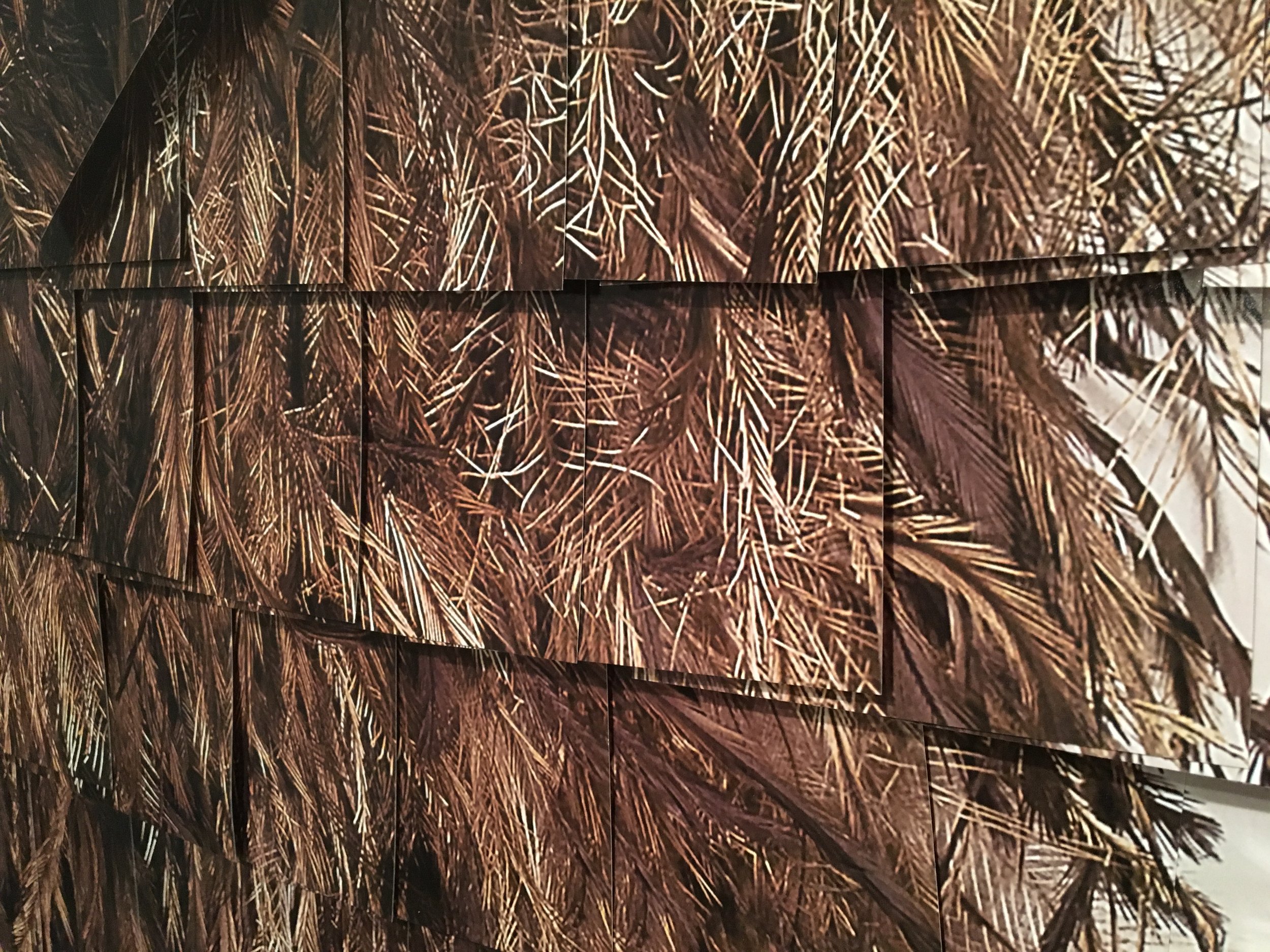
Gundulu/Emu Kākahu huruhuru, (2018) (detail)
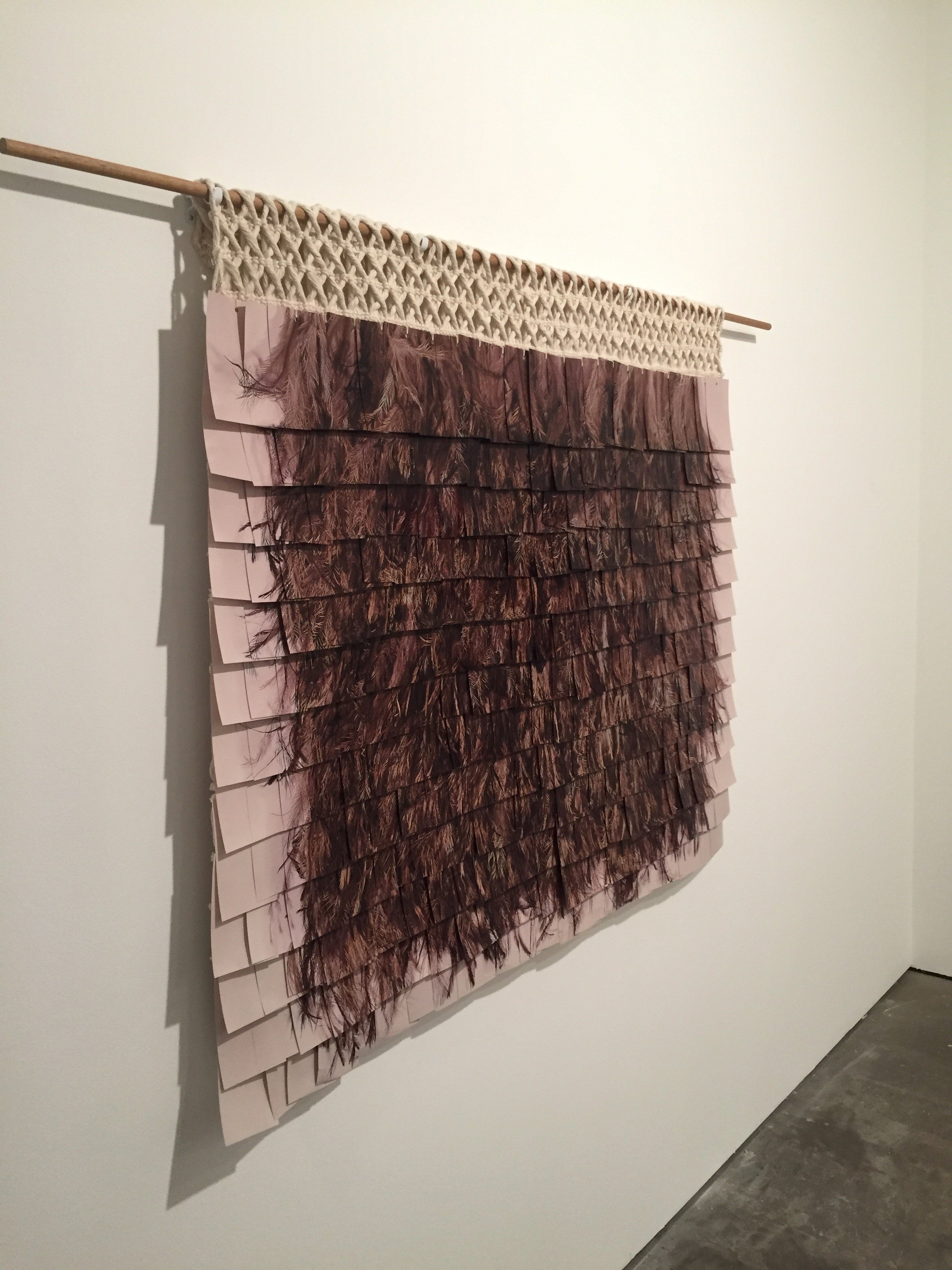
Gundulu:Emu Kākahu huruhuru(installation View 2)

Blue Princess Parrot (2018)

Brown Goshawk (Raptor) (2018)

Cloncurry Rosella (Parrot) (2018)
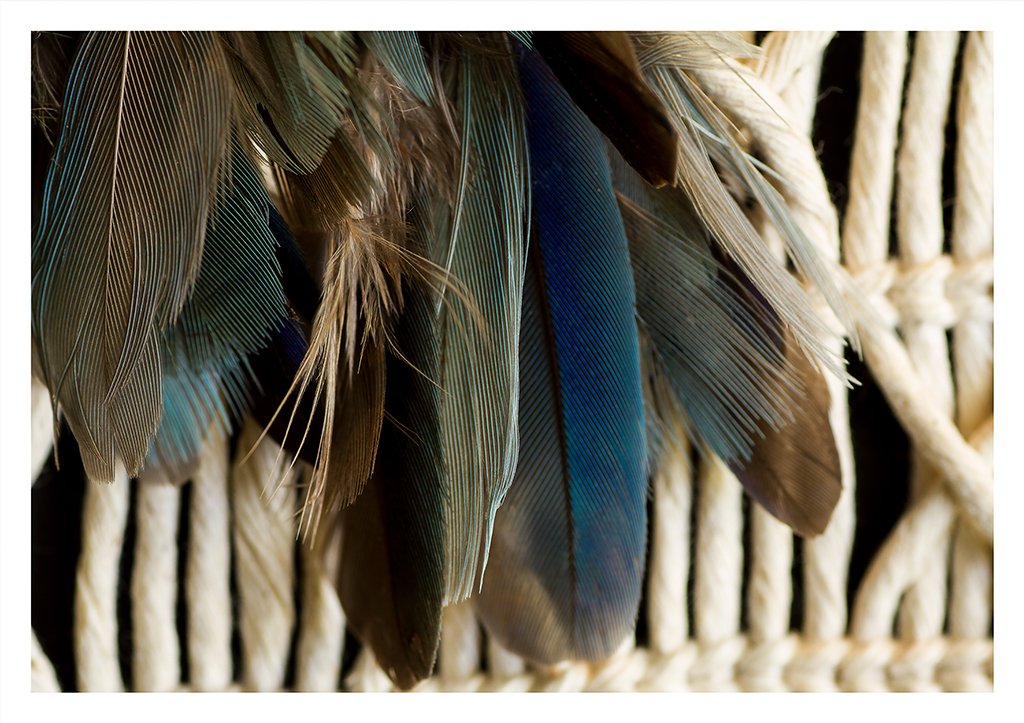
Dollar Bird (Native Kingfisher) (2018)

Galah (Cockatoo), (2018)

Kestrel, (2018)

Koel (Raptor) (2018)
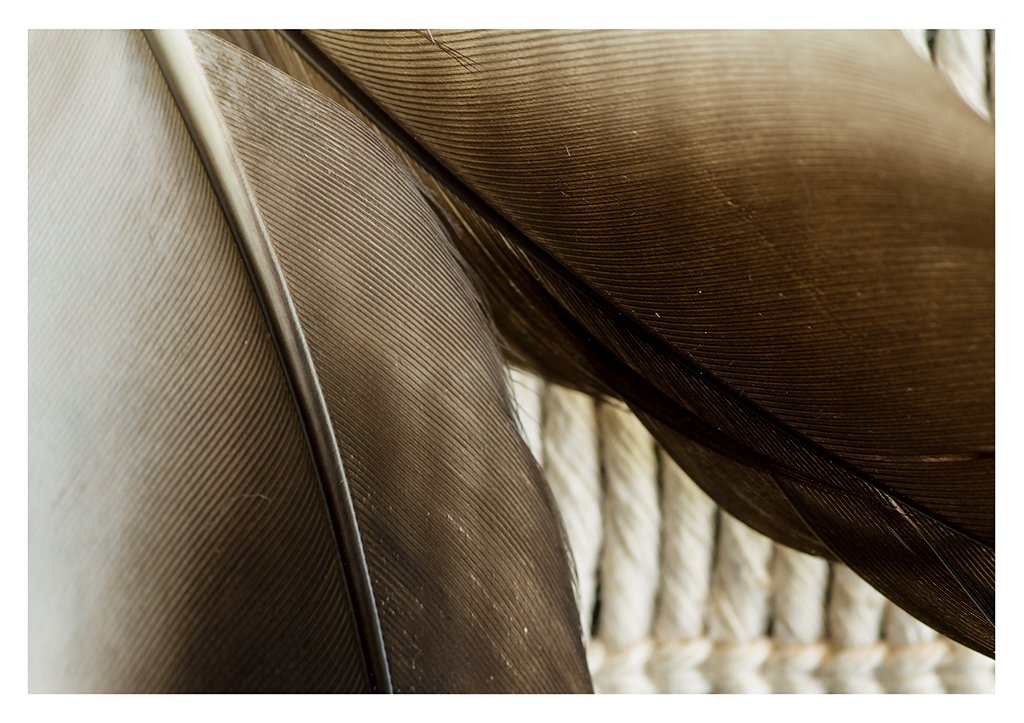
Laughing Kookaburra (Native Kingfisher) (2018)

Major Mitchell’s Cockatoo (2018)
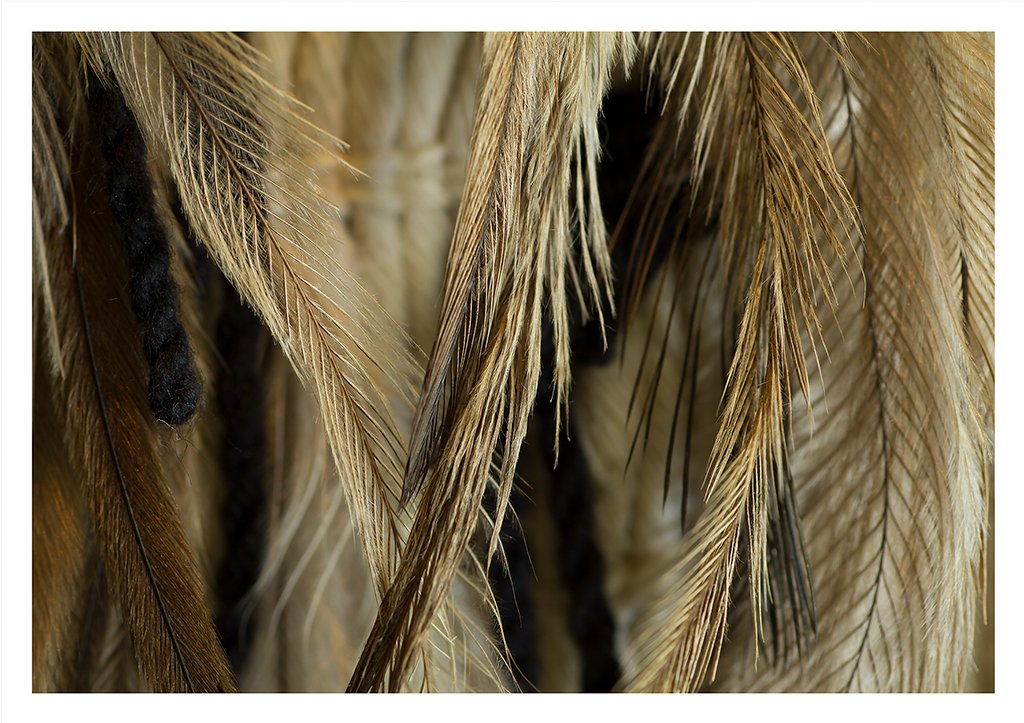
Emu and hukahuka (tassel) (2018)
